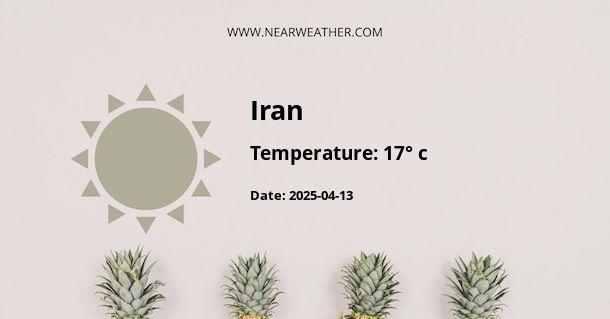Overview
The Islamic Republic of Iran, commonly known as Iran, is a vast country located in Western Asia. It is the second-largest country in the Middle East and the 17th largest in the world. Iran is a nation with diverse climates, ranging from arid and semi-arid, to subtropical along the Caspian coast.
Geographical Context
Iran is surrounded by several countries, including Afghanistan, Armenia, Azerbaijan, Iraq, Pakistan, Turkey, and Turkmenistan. It also has an extensive coastline along the Persian Gulf and the Gulf of Oman. The country's diverse geography, including its vast deserts, mountain ranges, and coastal regions, significantly influences its climate.
Climate Overview
Iran's climate varies dramatically from region to region. The coastal regions along the Caspian Sea have a subtropical climate, while the central and eastern parts of the country are characterized by a desert climate. The western and northern regions experience a mountainous climate.
Weather Patterns
The weather in Iran is influenced by several factors, including its large geographical size, varied topography, and geographical location. The country experiences four distinct seasons - spring, summer, autumn, and winter, each with its unique weather patterns.
Spring (March to May)
Spring is a pleasant season in Iran, with temperate weather and vibrant flora. The temperatures during this period range from 15°C to 25°C. The weather is generally mild, with occasional rainfall.
Summer (June to August)
The summer months in Iran are hot and dry, especially in the central and southern regions. The temperatures often exceed 40°C, particularly in the desert areas. However, the northern and western regions are cooler due to their higher altitudes.
Autumn (September to November)
Autumn is characterized by mild to cool temperatures and occasional rainfall. The temperatures during this period range from 15°C to 25°C. Autumn is also the period when the country's landscape transforms into a palette of vibrant colors.
Winter (December to February)
Winters in Iran can be quite harsh, particularly in the mountainous regions where temperatures often drop below freezing. Snowfall is common in these areas. However, the southern and central parts of the country experience milder winters.
Climate Data
According to the Iran Meteorological Organization, the average annual temperature in Iran is 18°C, with the hottest month being July (average temperature of 28°C) and the coldest month being January (average temperature of 8°C). The average annual rainfall is around 250mm, with the majority of the rain falling during the winter months.
Climate Change Impact
Like many countries around the world, Iran is grappling with the impacts of climate change. According to a report by the World Bank, the country is experiencing increased temperatures, decreased rainfall, and more frequent and severe weather events. These changes are affecting Iran's natural resources, agriculture, and water supply, posing significant challenges to the country's socio-economic development.
Conclusion
Iran's climate is as diverse as its geography. From the subtropical climate of the Caspian coast to the arid deserts in the east and the cold mountainous regions in the north and west, the country offers a unique blend of weather conditions. However, the impacts of climate change are posing significant challenges, making it imperative to implement effective climate change mitigation and adaptation strategies.
A - Iran's Latitude is 32.000000 & Longitude is 53.000000.
A - Weather in Iran is 17° today.
A - Climate Conditions in Iran shows clear sky today.
A - Humidity in Iran is 32% today.
A - Wind speed in Iran is 29.05 km/h, flowing at 191° wind direction. today.
